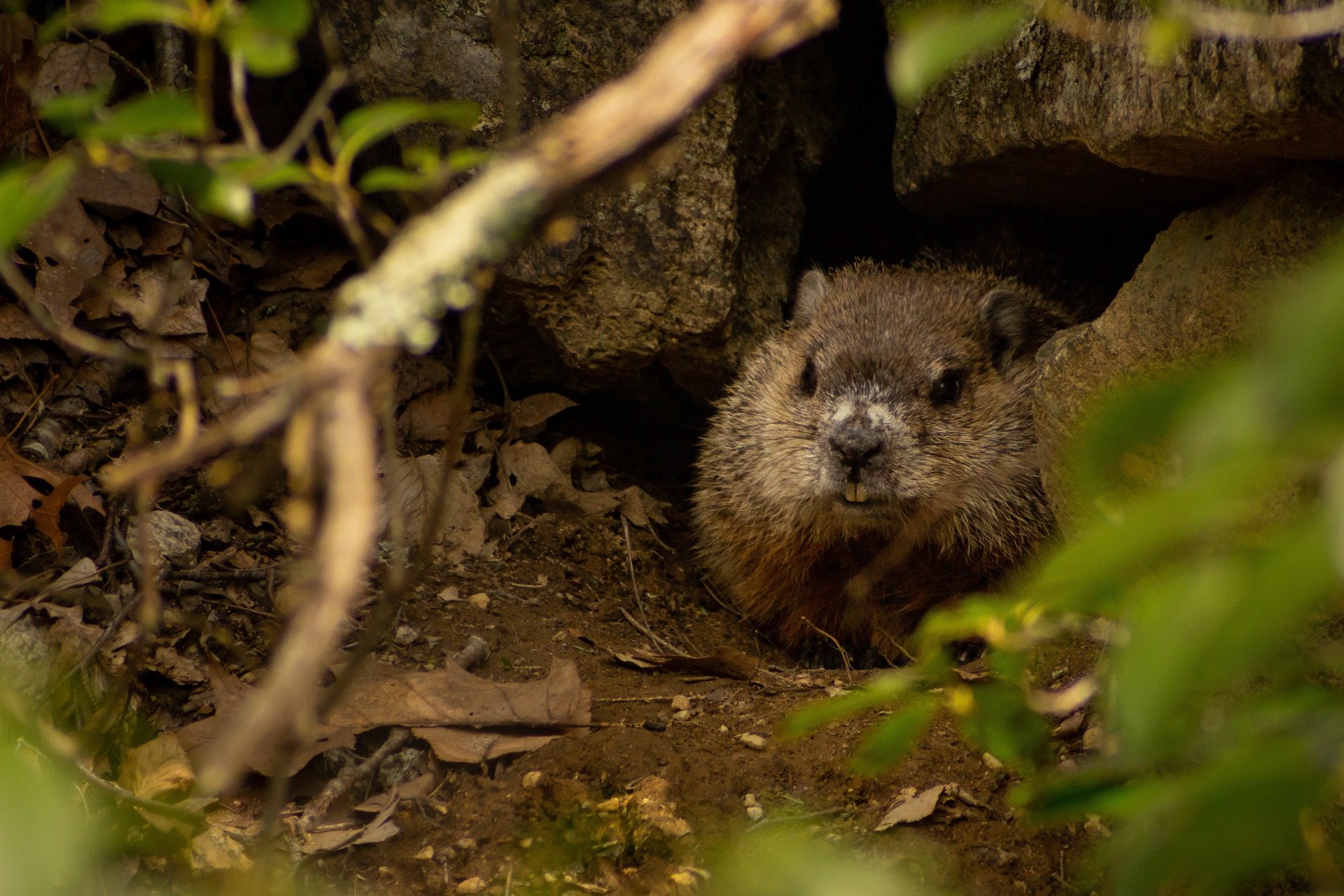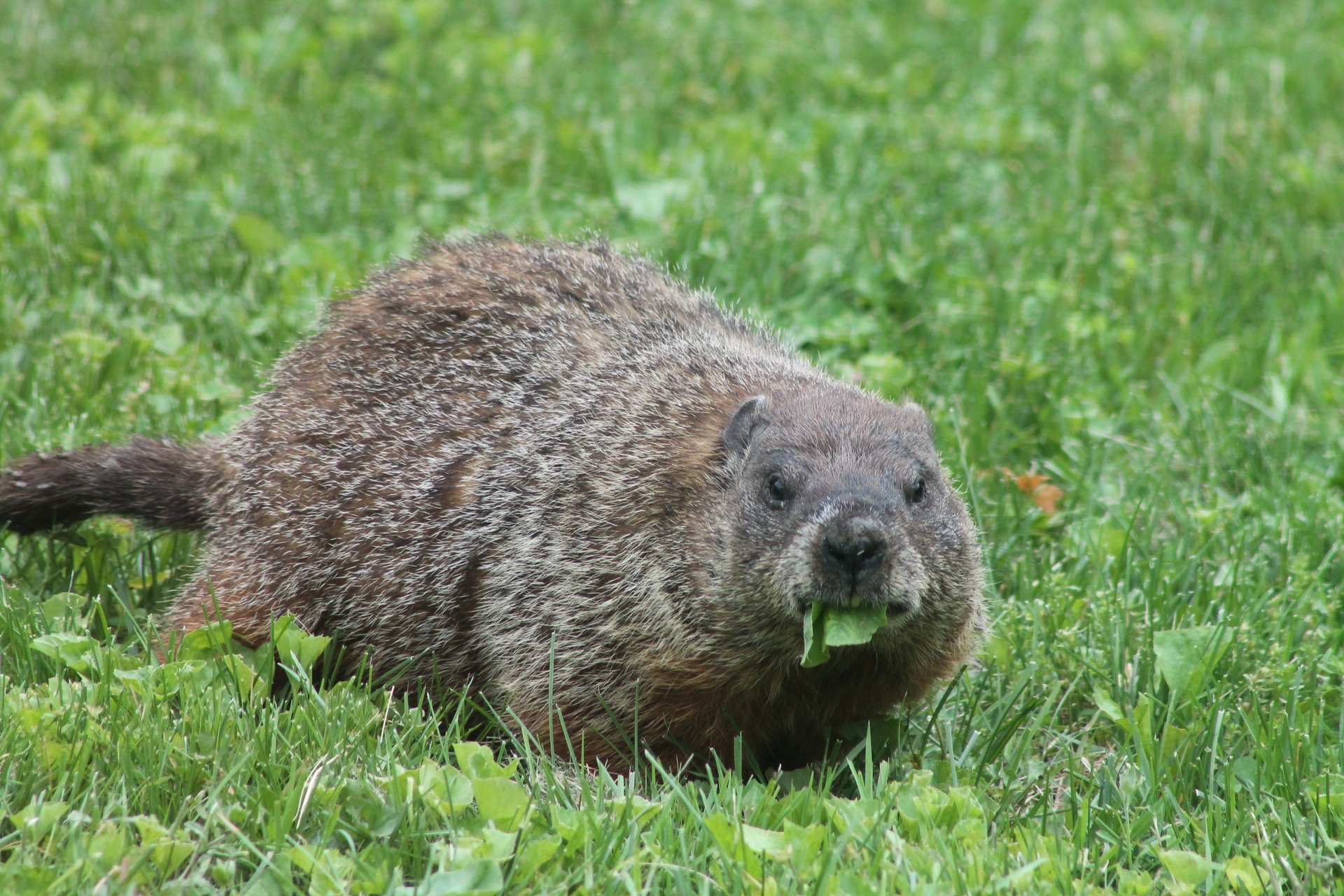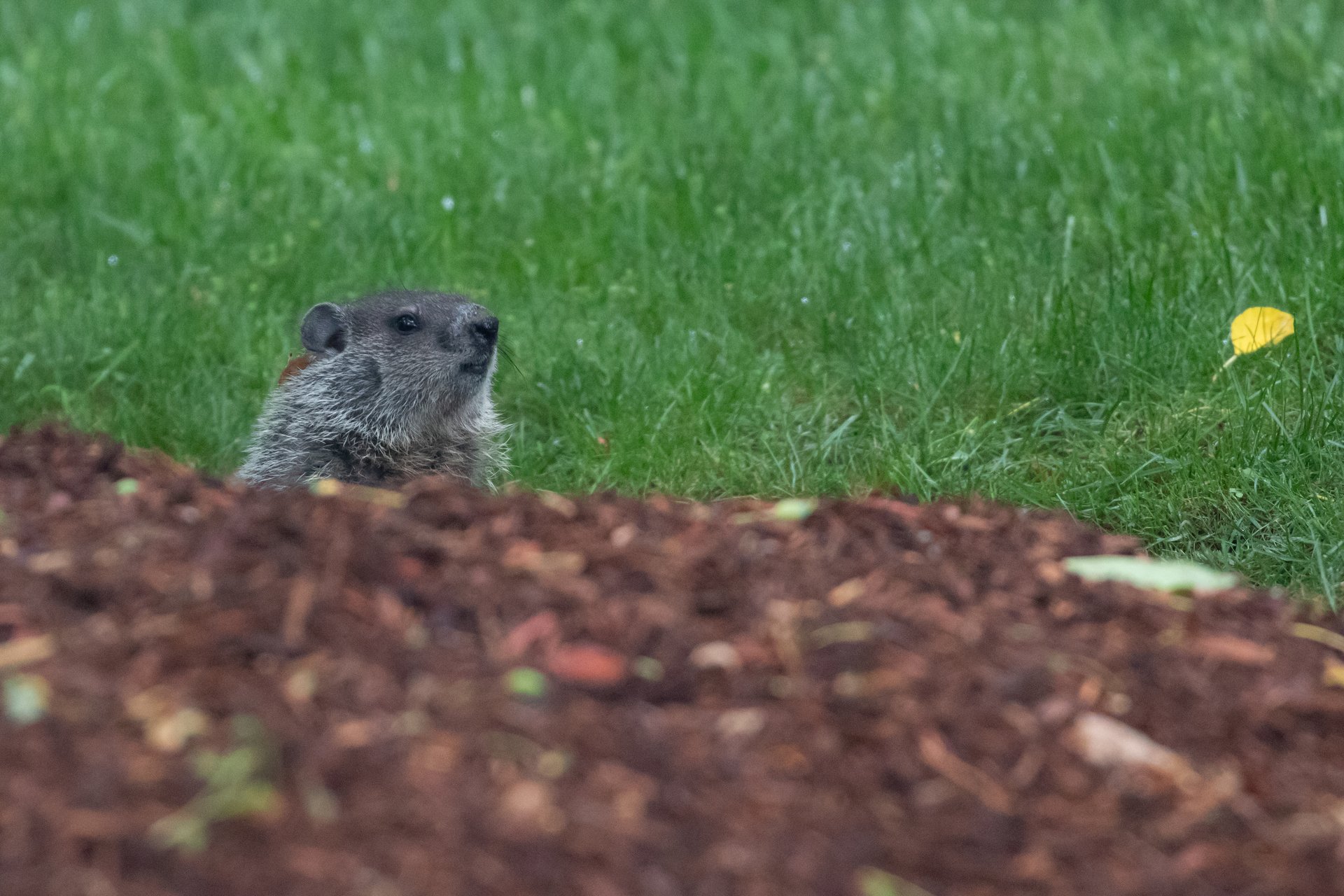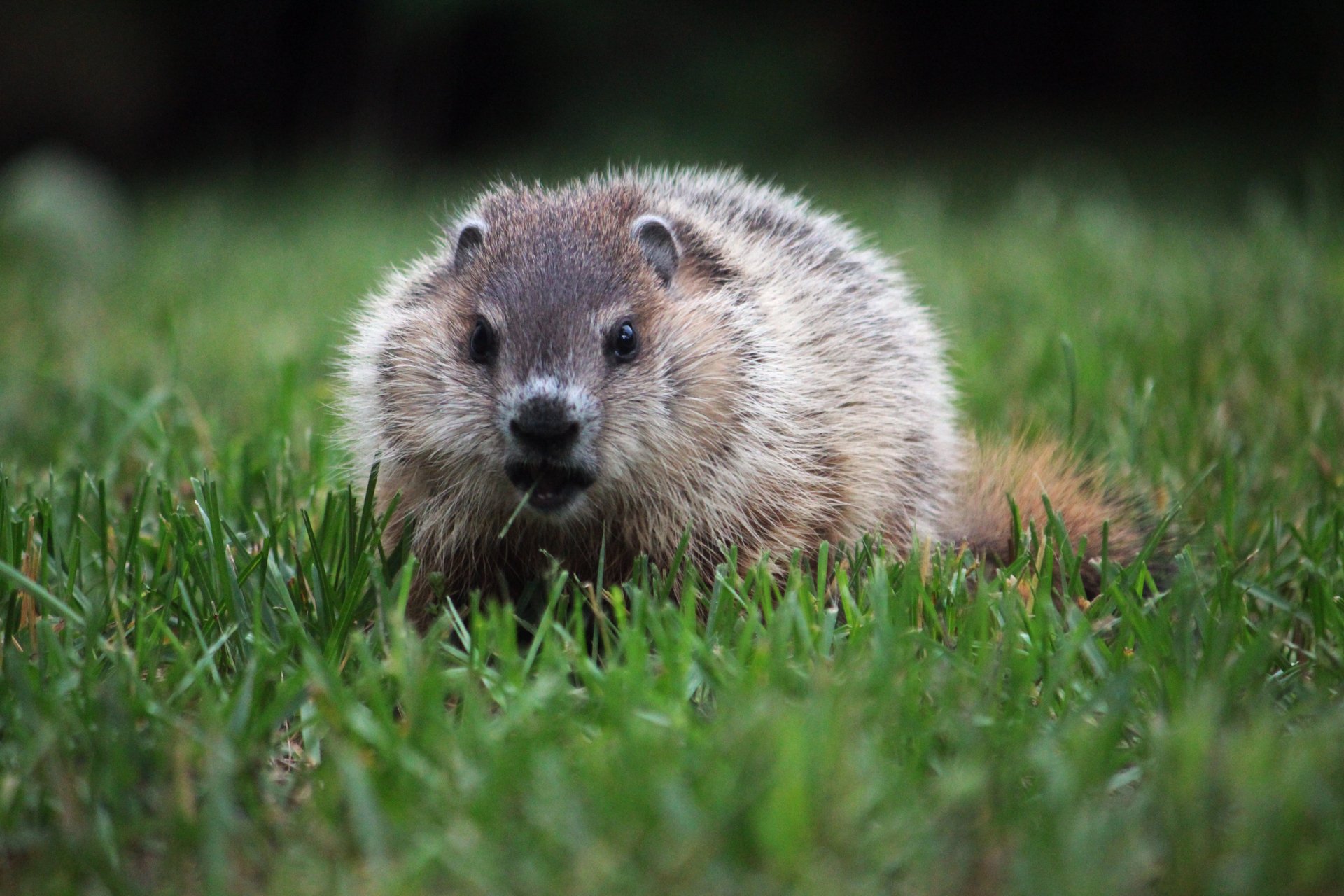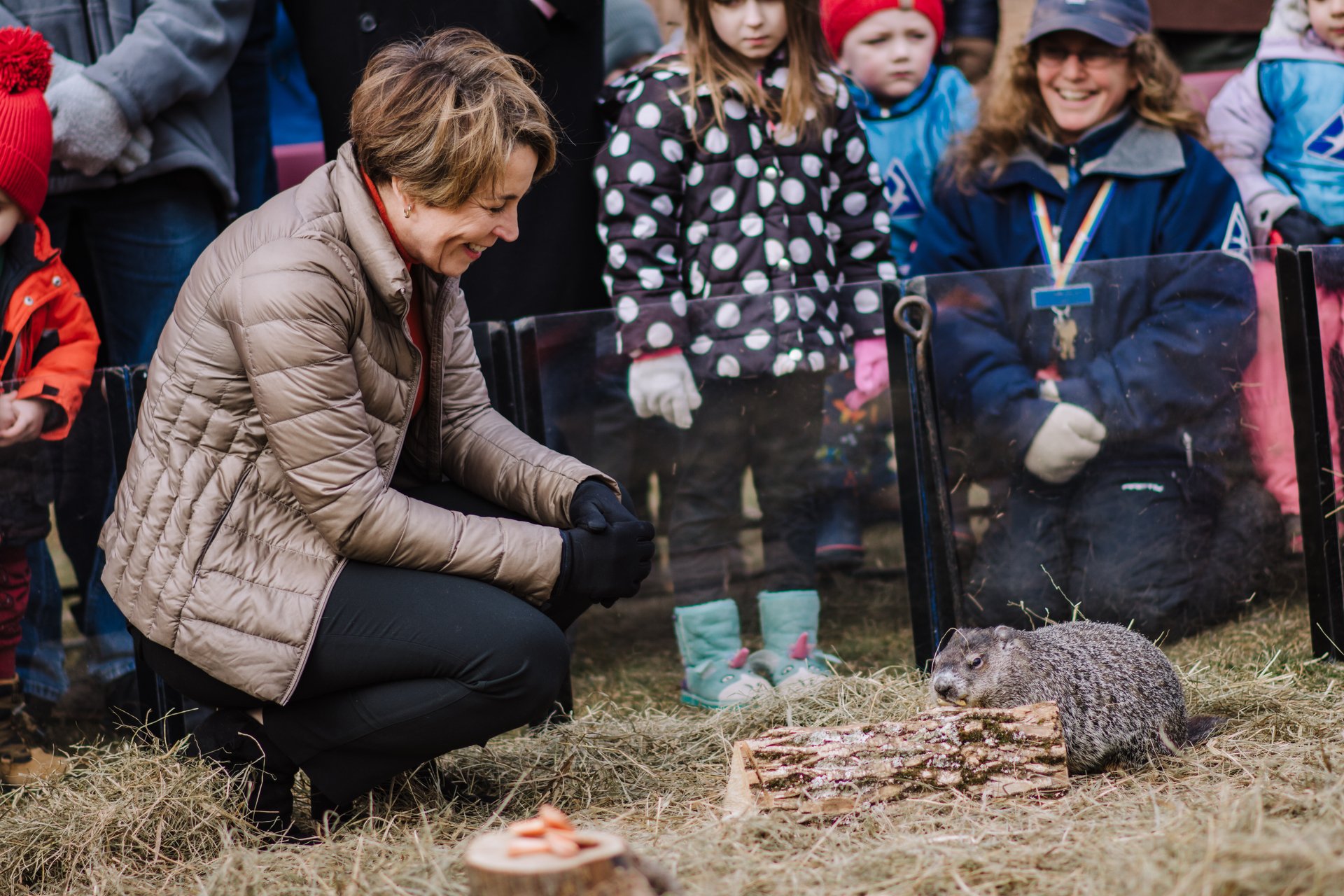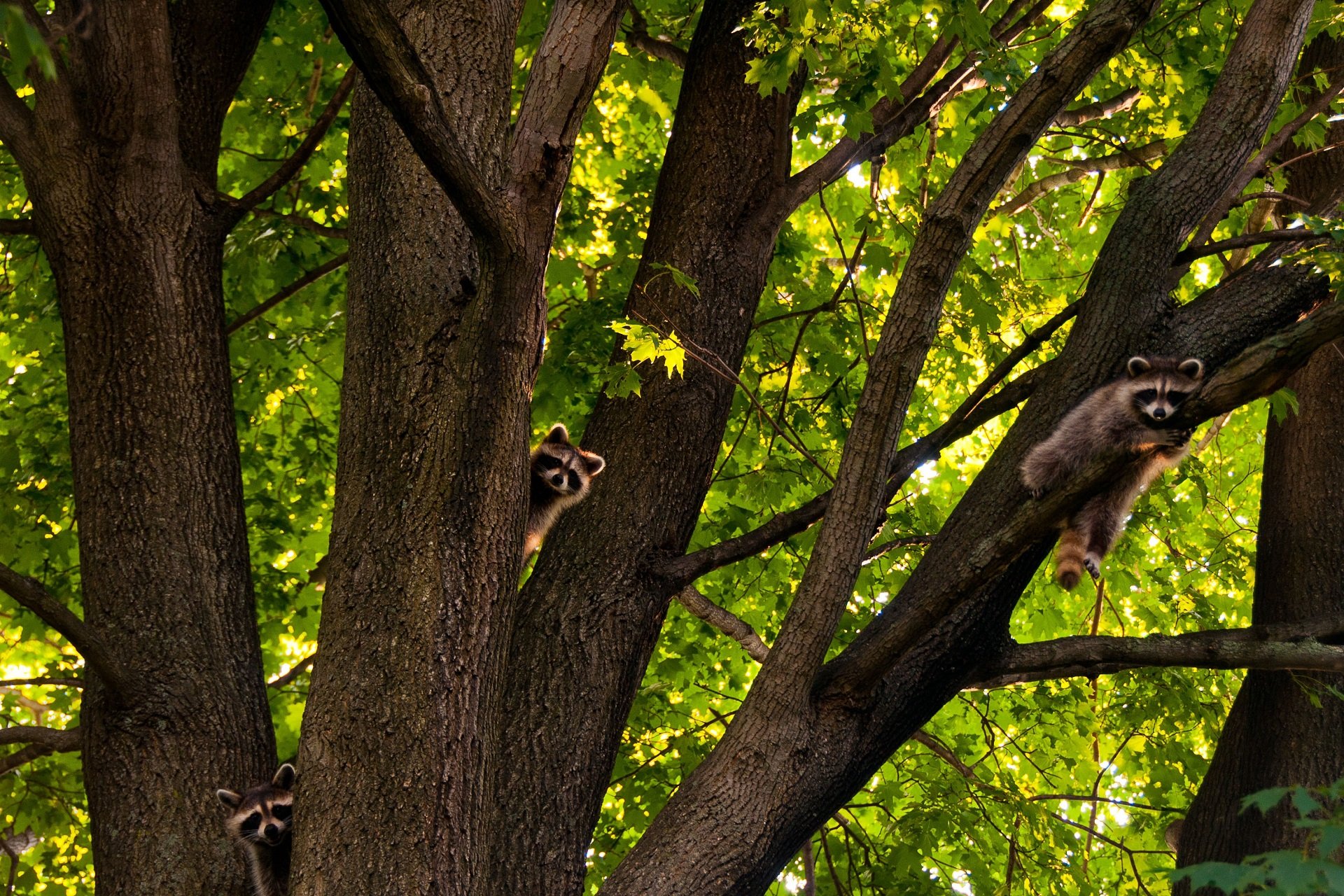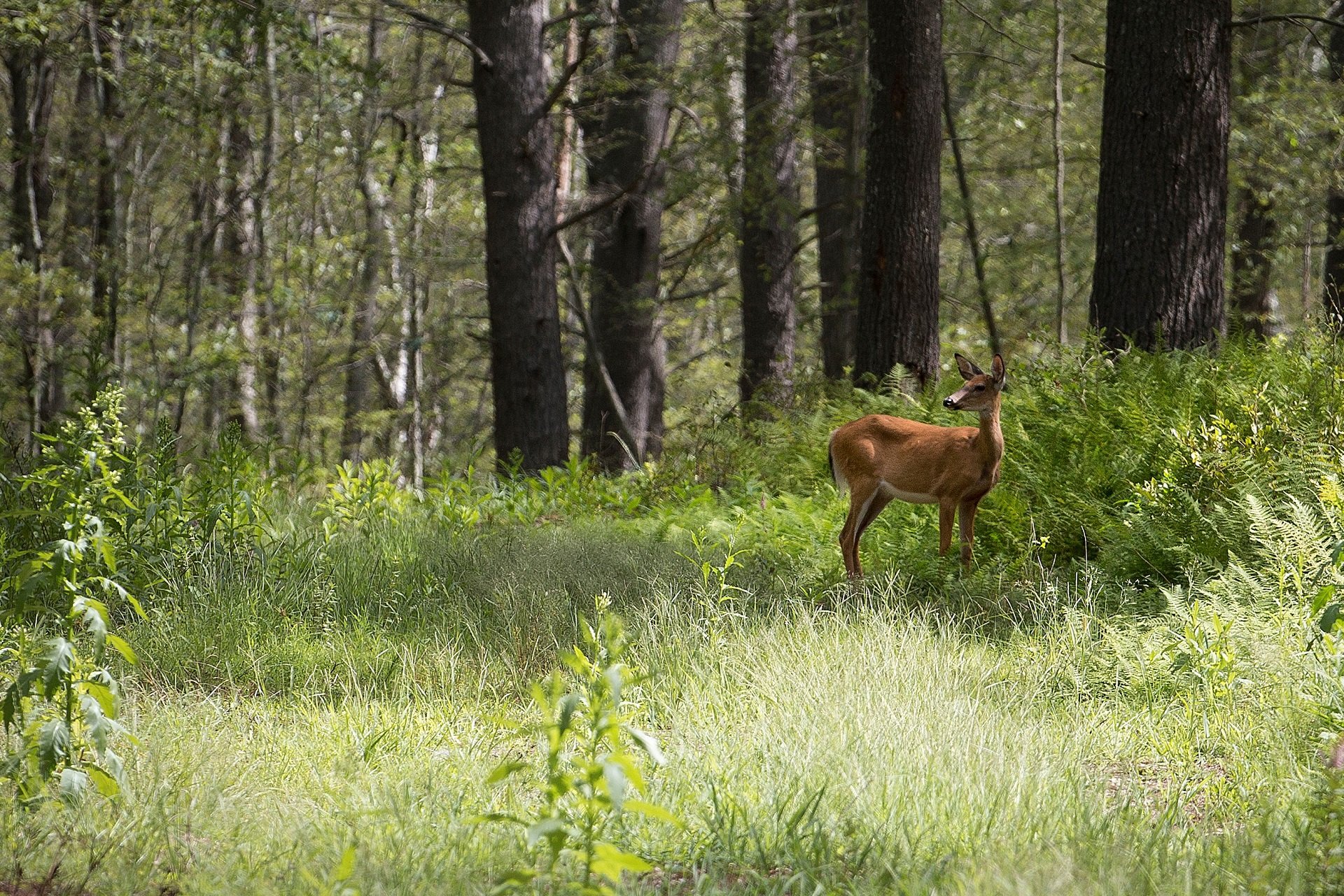Mammals in Massachusetts
Woodchucks (Groundhogs)
The Woodchuck, also known as the groundhog, belongs to the marmot family. In New England, they inhabit both urban and suburban yards, fields, meadows, and woodland clearings. They can also be seen in grassy areas along highways.
How to Identify a Woodchuck
Groundhog fur is reddish-brown mixed with gray guard hairs with a yellow tip. Generally, they have darker faces, tails, legs, and feet. These rodents often grow up to 20 inches in length, with a tail that measures roughly six inches long, and generally weigh 6–12 pounds.
Woodchucks have short, muscular legs designed for digging, and large front teeth that they must wear down by chewing to curb tooth growth.
Woodchuck Behavior & Life Cycle
Woodchucks are active during the day. In summer, they commonly feed in the early morning and the late afternoon, spending the rest of the day sleeping or basking in the sun.
The average life span for a woodchuck in the wild is three to four years. They do not mate until their second year, breeding in March or April. Following a 32-day gestation period, the female will raise the litter, usually containing four to six kits, alone.
The young open their eyes at four weeks and are weaned at six weeks. In the fall the young woodchucks venture off to seek their own territories.
Where Do Woodchucks Live?
Woodchucks live in shrubby areas near fields, pastures, and small woodlands. They dig extensive burrows 2–6 feet deep and up to 50 feet long that contain numerous chambers with specific functions, such as for nesting or waste.
Main entrances can be spotted by an adjacent mound of fresh dirt, which these animals use for observation and sun-basking. In addition, there may be as many as five other openings to the den.
Do Woodchucks Hibernate?
One of the few true hibernators found in Massachusetts, woodchucks hibernate from October through March in winter dens, often located in wooded areas. While hibernating, their body temperature drops from 99°F to 40°F, and their heartbeat drops from 100 beats per minute to 4 beats per minute.
What Do Woodchucks Eat?
Woodchucks feed on a variety of grasses and chickweeds, clover, and many varieties of wild and cultivated flowers. They eat blackberries, raspberries, cherries, and other fruits, along with the bark of hickory and maple trees. They will even eat grasshoppers, June bugs, and other large insects.
How to Deter Woodchucks from Your Garden
Much to the dismay of farmers and gardeners, they love vegetables, especially broccoli, peas, beans, carrot tops, lettuce, and squash. Fencing offers the only viable way to protect plants from woodchucks. Keep in mind that woodchucks can burrow under and climb over fencing, so plan accordingly.
Ideally, you want to install fencing before the woodchuck gets a taste of any produce, as this will lessen the animal’s determination to get through the barrier.
There are a couple of fencing options:
- Install chicken wire (at least 6 feet tall) around the perimeter, with the help of a 5-foot post. Be sure to bury the wire at least 10 inches in the ground. At the top of the wire, leave 12 inches unattached from your posts, and bend the fencing outwards, so that the woodchuck can’t get a good grip to climb over it.
- Place 3-foot-wide chicken wire flat on the ground around the perimeter of the garden. After you’ve installed this ground wire, secure a 4–6-foot-high vertical fence over the ground wire. Leave 6 inches of ground wire from the edge closest to the garden and 2½ feet of chicken wire on the outside of the vertical fence. Leave the top 12 inches of the vertical fence unsecured and bent outward, away from the garden. The woodchuck won’t be able to dig under the vertical fence because of the chicken wire underneath.
If proper fencing isn’t possible, you can try:
- Planting species that repel woodchucks, such as gopher plant (Euphorbia lathyrus) or crown imperial fritillary (F. imperialis) around the garden.
- Repeated treatments of planted areas with various repellents, such as fox or coyote urine, diluted Tabasco sauce or red pepper flakes, or scattered human hair are other reported deterrents.
- Allowing a pet dog access to the planted area may also help deter woodchuck visits.
- Constructing a visibility barrier, such as a three-foot black plastic wall, before any woodchucks identify the area as a foraging ground, may also prove effective.
Groundhog Day
Every year on February 2, Americans turn their attention to a small, furry animal. According to legend, if the groundhog (or woodchuck) sees its shadow there will be six more weeks of winter, but if not, spring is on the way.
The peculiarity of this tradition has earned it a beloved place in American folklore. Upon coming to Pennsylvania in the 1700s, German settlers brought a longstanding tradition known as Candlemas Day—a holiday celebrated at the midpoint between the Winter Solstice and the Spring Equinox. Superstition held that if the weather was fair on Candlemas Day, the second half of winter would be stormy and cold. To determine the “forecast,” Germans watched a badger to check for a shadow.
Since there were no badgers in Pennsylvania, they looked for the next best thing—the groundhog.
Celebrating Groundhog Day with Drumlin Farm's Ms. G
While the award for the most famous groundhog in America goes to Punxsutawney Phil from Pennsylvania, but here in Massachusetts we have our own celebrity. Ms. G has been “forecasting” the weather at Drumlin Farm Wildlife Sanctuary in Lincoln since 2003.
Wellesley school students joined Mass Audubon in submitting a bill to the Massachusetts state legislature to declare Ms. G the Official State Groundhog. The bill was successfully enacted into law and signed by Massachusetts Governor Deval Patrick on July 31, 2014.
Threats to Woodchucks
Woodchucks are an important part of a healthy, thriving ecosystem. Predators of woodchucks include coyotes, foxes, and bobcats. They can also be injured or killed by vehicles. Like other mammals, woodchucks can be infected with rabies.
How Mass Audubon Supports Woodchucks
Mass Audubon works at our wildlife sanctuaries and beyond to ensure that the nature of Massachusetts continues to thrive. By scientifically monitoring Massachusetts wildlife, Mass Audubon informs important conservation decisions and launches targeted initiatives to help at-risk species. In addition, fostering healthy habitats, advocating for supportive policies, and educating people about the importance of nature conservation is critical to our success. Learn more about our work
How You Can Support Woodchucks
Mass Audubon supports animals like the Woodchuck every day, but we couldn’t do it without the support of our 160,000+ members.
Help us support the Woodchuck, and animals like them, by becoming a member today.
Stay Connected
Don't miss a beat on all the ways you can get outdoors, celebrate nature, and get involved.



